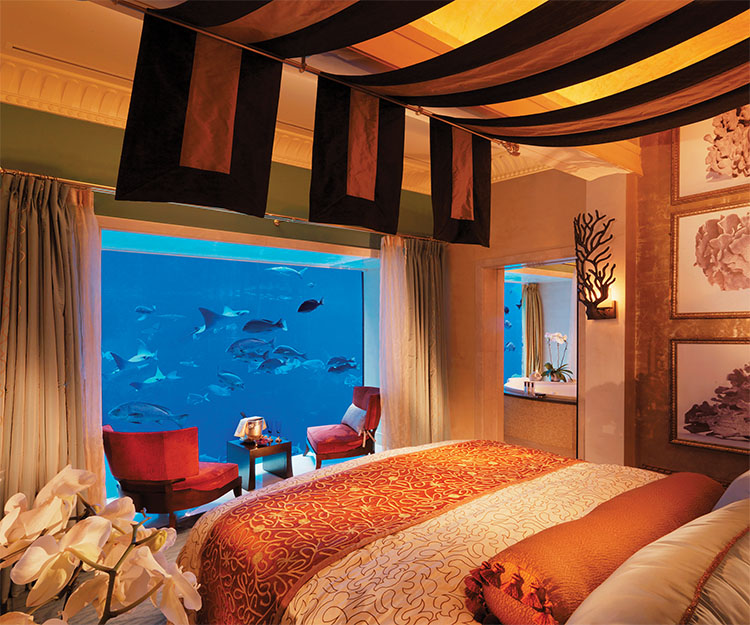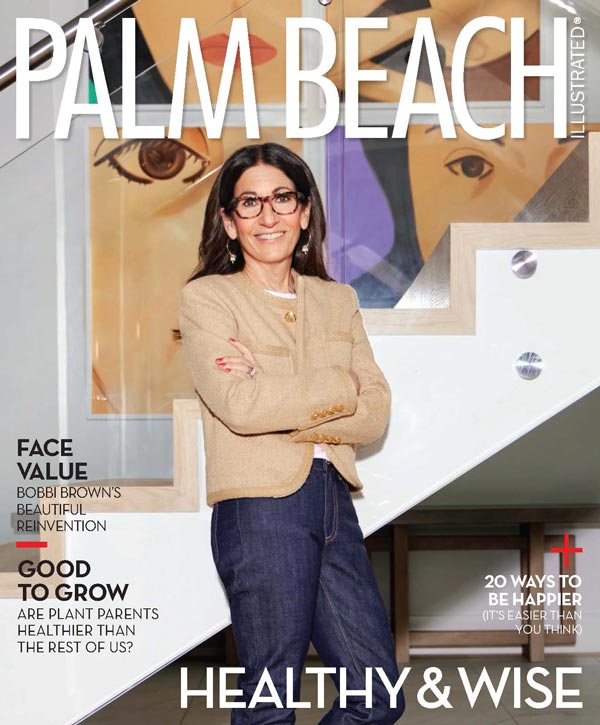 Modern-day Dubai emerges from the desert like a futuristic mirage. Acres of chrome, steel, and glass have reclaimed sandy swaths of land. Ribbons of highway connect modest markets with world-renowned structures. Even water is no barrier to construction in Dubai, a city that specializes in erecting manmade islands where only sea once existed.
Modern-day Dubai emerges from the desert like a futuristic mirage. Acres of chrome, steel, and glass have reclaimed sandy swaths of land. Ribbons of highway connect modest markets with world-renowned structures. Even water is no barrier to construction in Dubai, a city that specializes in erecting manmade islands where only sea once existed.
The best way to take it all in is from above—and Dubai abounds in amazing vantage points. Perhaps the most well-known is the Burj Khalifa, which, at 2,717 feet, is the world’s tallest building. Visitors can step onto the observation deck on the 124th floor, or go even higher to another outdoor terrace on level 148. Either way, you’re in for comprehensive vistas and a welcomed temperature drop of up to 15 degrees.
But when it comes to picturesque panoramas, nothing beats the dual views from the Royal Bridge Suite at Atlantis The Palm, Dubai. A fixture on the Instagram accounts of social media stars like Kim Kardashian and the Real Housewives of Beverly Hills, this suite exudes opulence. Enter from a private elevator and a personal butler will escort you through rooms decked out with gold-hued linens, orchids galore, and frescoed ceilings.

All of this pales in comparison to the sights awaiting on either balcony. Located in the bridge connecting Atlantis’ two towers, this suite overlooks the Persian Gulf on one side and the Dubai skyline on the other. From the latter spot, you can see The Palm, an artificial set of islands, for its true shape: a trunk and 16 fronds, all capped by a crescent where the resort resides.
The Royal Bridge is one of Atlantis’ seven signature suites, including two underwater suites that are more magical than novelty. The bottom floors of these multistoried spaces look into the 11-million-liter Ambassador Lagoon, meaning you can say hello to stingrays as you enjoy breakfast in bed or soak in the tub as sharks swim by.
The ocean theme doesn’t end there. Atlantis’ lobby revolves around a massive Dale Chihuly sculpture that hides glass sea creatures within its interlocking tentacles. The East Tower houses the Lost Chambers Aquarium. Opt for a Fish Tales Tour to go behind-the-scenes, with stops at the onsite hospital and up to the Ambassador Lagoon to feed the fish. Want to dive even deeper? Then go Aquatreking. A specialized helmet allows guests to enter the lagoon and meet its residents—no diving experience necessary. There’s also morning yoga in the aquarium, practiced not in the water but inside the Lost Chambers.

For the ultimate family-friendly outing, spend a day at Aquaventure waterpark. Spanning 42 acres, Aquaventure boasts dozens of river rides and slides. Adrenaline junkies will love The Leap of Faith, a nine-story plunge into a transparent tube that crosses the aquarium. For something slightly tamer but no less exciting, try Zoomerango, a group slide that will leave adults giggling like schoolkids.
Even the restaurants at Atlantis aren’t free from aquatic influences. With a dining room that shares glass walls with the lagoon, Ossiano pairs an underwater atmosphere with a seafood-centric menu by chef Grégoire Berger. The beverage and food program takes a modern, playful approach, with creations like the Pearl Diver cocktail that comes with a side “pearl” of green tea encapsulated in white chocolate.
Ossiano is one of 23 restaurants at Atlantis. There’s also a trio of celebrity chef outposts: Ronda Locatelli, with Italian fare by Giorgio Locatelli; Nobu, featuring high-end Japanese cuisine from Nobu Matsuhisa; and Bread Street Kitchen & Bar, an English-style pub centered around the cooking of Gordon Ramsey. (His famous beef Wellington doesn’t disappoint.)
Those craving something more Middle Eastern should dine at Ayamna. Serving classic Lebanese dishes with a fine-dining sensibility, Ayamna is a feast to save room for. Everything from the cold mezzeh course to traditional desserts like mahalabiya (pistachio cream topped with apricot nectar) proves as luscious as the restaurant’s exotic decor.
Between the activities, eateries, beaches, pools, and spa, visitors could theoretically spend an entire Dubai vacation at Atlantis. But one simply cannot ignore the extraordinary city on the other side of The Palm.
Despite its ancient geography, the majority of Dubai’s skyscrapers are products of the twenty-first century. Highlights include the Burj Al Arab, a luxury hotel designed to resemble a ship’s sail, and the Dubai Frame, which looks—well—like a giant picture frame. In terms of attractions, there’s an indoor ski resort, a plethora of theme parks, adventures on the sand dunes, and The Dubai Mall, the world’s largest shopping center. (Noticing a superlative pattern here?)
While most of Dubai’s top destinations are new, the city actually dates back to 1833, when members of the Bani Yas tribe settled at Dubai Creek. Today, this inlet slices through the main business district, with Deira to the north and Bur Dubai to the south. On either side rests a bounty of souks (markets). Start at the Textile Souk to barter for a colorful caftan before crossing the creek to explore the spice and gold markets.
Just how should you handle the crossing? The most authentic way is to hail a water taxi, known as abra. Hand over one dirham (about 25 cents) and squeeze on board for the five-minute ride. If you’re lucky, your trip will coincide with dusk, when the harsh sun wanes, imbuing the water with a crystalline elegance. If you’re even luckier, the early evening call to prayer will beckon you ashore. With the sounds of this ancient ritual echoing through the streets and the welcoming aromas of cardamom and turmeric wafting through the air, you’ll find it hard to ever say goodbye to Dubai.









Facebook Comments